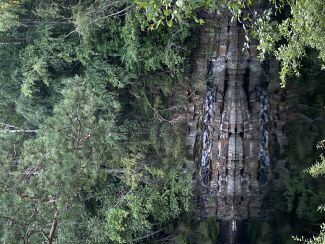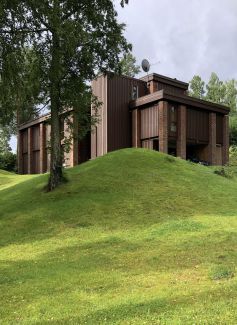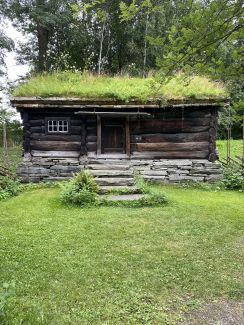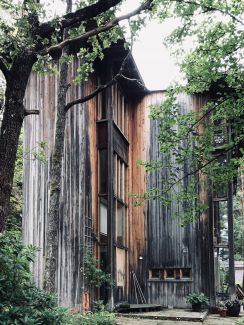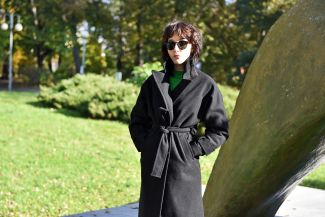Jakie czynniki musi uwzględnić architekt, projektując dom?
Dom, podobnie jak każdy inny obiekt architektoniczny, osadzony jest w pewnym kontekście. Składa się na niego zarówno określony klimat, topografia działki, lokalna tradycja budowania, jak i kultura społeczności. Ważne jest, by projekt uwzględniał te aspekty. Harmonijnie zaprojektowany dom stanowi dopełnienie krajobrazu i nie może go zaburzać. Powinien podnosić walory krajobrazowe, a jednocześnie z nich wynikać, pozostawać z krajobrazem w ścisłej, nierozerwalnej relacji.
Zazwyczaj dom projektowany jest dla określonej rodziny, która ma indywidualne przyzwyczajenia i upodobania. Praca architekta polega na tym, aby spełnić oczekiwania Inwestorów, a jednocześnie uzmysłowić im, w jaki sposób mogą podnieść komfort swojego życia.
W swoim doktoracie skupia się Pani na wpływie krajobrazu na architekturę krajów nordyckich. Dlaczego zainteresowała się Pani właśnie tymi krajami?
Opisywane przeze mnie kraje nordyckie połączone są wspólną kulturą oraz historią. Norwegia i Finlandia zawsze były w centrum moich zainteresowań ze względu na niespotykaną atmosferę tych krajów oraz ich mitologię. Szwecja z kolei jest także ciekawym krajem ze względu na uwarunkowania historyczne i długotrwałe wpływy europejskie, które mieszały się z lokalną kulturą. Aspekt relacji, jakie może nawiązywać architektura z krajobrazem wynika z próby zrozumienia fenomenu architektury nordyckiej.
Na czym polega specyfika nordyckiej architektury?
Charakteryzuje się ona głównie odzwierciedlaniem natury i wpasowaniem się w otoczenie, ale przede wszystkim opiera się na nieuchwytnych wartościach, tj. atmosferze, grze światła i cienia czy taktylności (wrażeń dotykowych) materiałów. Architektura nordycka, powstająca w naturalnym krajobrazie łączy się także z pełnym spektrum doświadczeń zmysłowych. Wyrasta ona ze zrozumienia otoczenia przez architekta, uchwycenia jego genius loci (opiekuńczego ducha miejsca) oraz szacunku do materiałów i tradycji. Połączenie powyższych aspektów skutkuje powstaniem architektury wyrastającej ze zrozumienia miejsca i utożsamiającej się z naturą oraz wszystkimi jej elementami składowymi – tektoniką terenu, światłem czy roślinnością.
Czym się charakteryzuje badany przez Panią okres?
Druga połowa XX wieku to powrót, do zapominanych przez modernizm i katastrofy wojny, tradycji kształtowania poprawnej relacji architektury z naturą, czyli otoczeniem budynku. W tym czasie następuje rozkwit tendencji łączących architekturę z naturą, które w swoim najlepszym wydaniu doprowadzają do harmonijnej relacji architektury z krajobrazem.
Jest już Pani po wysoko ocenionej ewaluacji śródokresowej w IDS.
Jestem w połowie realizacji studiów, mam opracowane tło teoretyczne i historyczne swojej dysertacji. Bez tego nie byłabym w stanie zacząć poszukiwań badanych przeze mnie budynków, czy rozpocząć badań własnych na terenach omawianych przeze mnie krajów. Niedawno udało mi się zrealizować wyjazd do Norwegii z otrzymanego grantu z Funduszu Udoskonalania Umiejętności Młodych Naukowców. Wyjazd pozwolił mi na potwierdzenie moich wstępnych tez dotyczących degradacji naturalnego otoczenia na rzecz gęstszej zabudowy czy przemian samych budynków. Dodatkowo pozwolił on na spotkania z właścicielami domów letnich, dzięki czemu poznałam pełne historie budynków oraz ich wady i zalety. Badania in-situ potwierdziły moje wstępne tezy i założenia, chociażby rodzaj relacji jaka powstaje między architekturą a otoczeniem i konkretne elementy wpływające na te relacje.
Jak wygląda Pani warsztat pracy?
Moje badania to wynik długoletniej fascynacji teorią, a przede wszystkim fenomenologią architektury opierającej się między innymi na percepcji zmysłowej, emocjach i atmosferze. Fenomenologia pozwala mi zrozumieć nordycką naturę, która opiera się właśnie na niepowtarzalnej atmosferze i dogłębnym odczuwaniu miejsca.
Przez specyfikę mojego tematu – określony przedział czasowy, warsztat pracy opieram przede wszystkim na badaniach literaturowych. Moja podstawowa literatura wykorzystywana w doktoracie notorycznie powiększa się o nowe pozycje, odnalezione w książkach czy polecone przez Profesorów. Podczas badań literaturowych sporządzam również listę potencjalnych budynków, które spełniają kryteria moich badań. Sama charakterystyka obiektów będzie stanowiła wnioski z moich badań.
Jakie możliwości w pracy architekta stwarzają studia doktoranckie?
Większość architektów opiera swoją karierę zawodową na praktyce, co nie jest oczywiście błędem. Kształcenie w zakresie teorii architektury oraz badania naukowe mogą jednak bardzo pozytywnie wpłynąć na osobisty rozwój i poszerzać granice wewnątrz których porusza się architekt. Studia doktoranckie stwarzają właśnie taką możliwość. Większość studentów III stopnia to osoby, które starają się łączyć praktykę zawodową z działalnością naukową i dzięki temu stale się rozwijają.
Rozmawiała Agnieszka Garcarek-Sikorska


